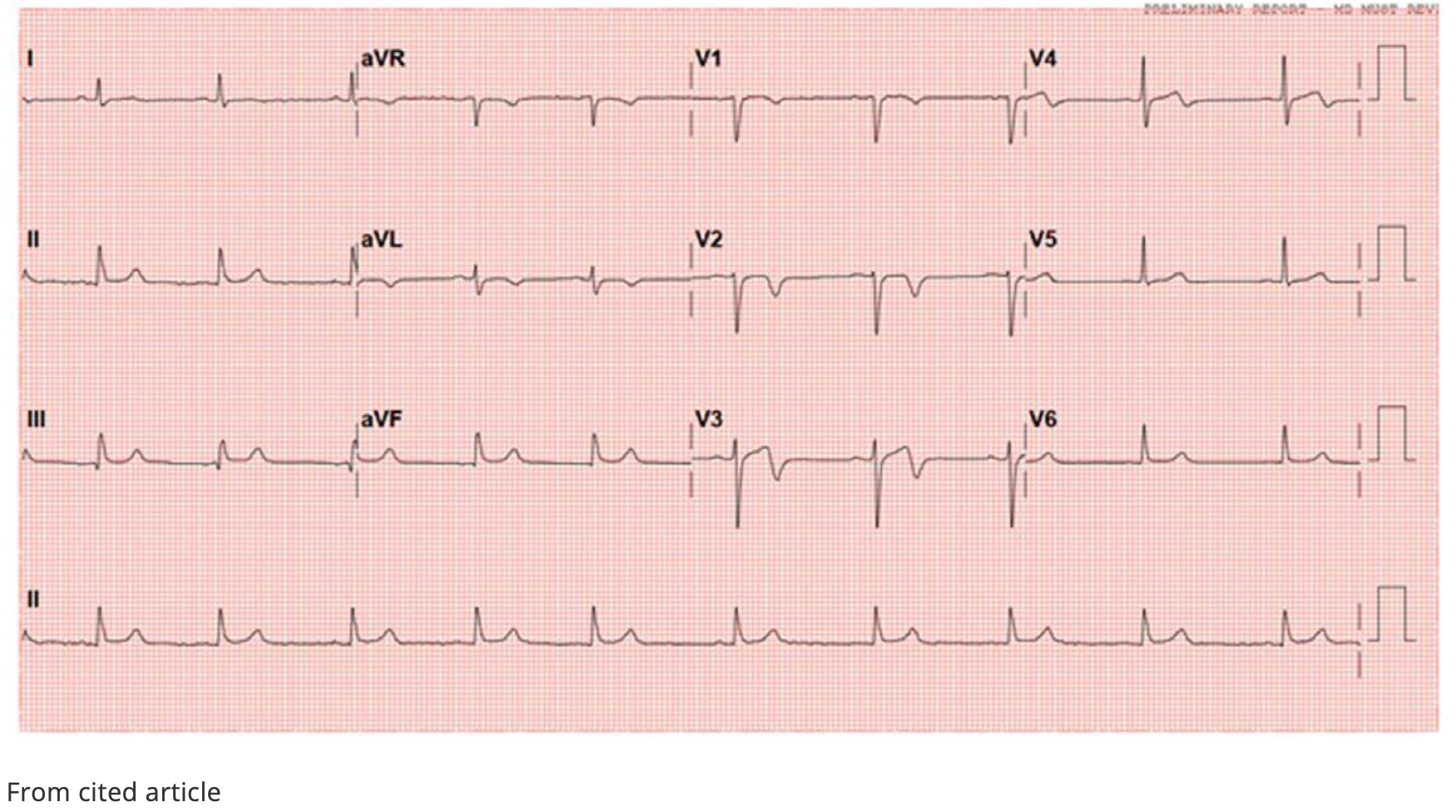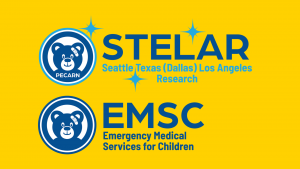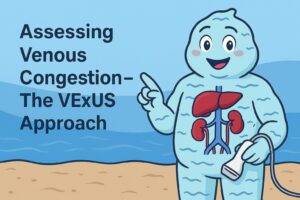We always work hard, but we may not have time to read through a bunch of journals. It’s time to learn smarter.
Originally published at JournalFeed, a site that provides daily or weekly literature updates.
Follow Dr. Clay Smith at @spoonfedEM, and sign up for email updates here.
#1: Fulminant Myocarditis – Recognition and Management from the AHA
Spoon Feed
This is what you need to know to recognize and manage fulminant myocarditis (FM) in the ED.
Why does this matter?
FM is: “a sudden and severe inflammation of the myocardium resulting in myocyte necrosis, edema, and cardiogenic shock.” It is a masquerader. Here are the pearls and pitfalls to spot it and treat it.
My achy breaky heart
This is an AHA Scientific Statement on FM. Our focus is on ED management.
-
Presentation – Dyspnea, chest pain, and arrhythmia, such as atrial or ventricular fibrillation are common presentations. Patients may present in shock and may have acute infectious symptoms; shock may appear septic but is likely cardiogenic. Consider FM in young patients with ACS-like or acute CHF presentation, especially when lacking typical risk factors. Ask about preceding illness. Right heart failure may cause hepatic congestion masquerading as a “liver disease” picture. Consider hypersensitivity FM from drugs like beta-lactams or carbamazepine.
-
ECG – It may show low voltage, ST-elevation mimicking acute injury, pericarditis-like changes with diffuse ST-elevation +/- PR depression. Ectopy, ventricular arrhythmias, and conduction blocks (long PR, Mobitz type II) are also common. Look for early changes of widened QRS or PR prolongation.
-
Labs – Troponin is usually markedly elevated as is BNP. If eosinophilia, ask about new medications and consider necrotizing eosinophilic myocarditis.
-
Imaging – Echocardiogram is the imaging study of choice. MRI or nuclear studies may be done later.
-
Treatment – If FM is suspected, don’t give too much fluid. Use norepinephrine as the vasopressor of choice; avoid dopamine. Avoid rate controllers with negative inotropy – they need tachycardia to maintain cardiac output. Avoid NSAIDs – they make sodium retention worse. Involve cardiology early to rule out coronary artery disease and to deploy invasive hemodynamic support if needed.
-
Disposition – If transferring with heart failure symptoms, it should be to a transplant center that can also do ECMO.
-
Prognosis – Ironically, those with the worst initial hemodynamic collapse often have the best chance of full recovery – if they survive the initial insult.
Source
Recognition and Initial Management of Fulminant Myocarditis: A Scientific Statement From the American Heart Association. Circulation. 2020 Jan 6:CIR0000000000000745. doi: 10.1161/CIR.0000000000000745. [Epub ahead of print]
Open in Read by QxMD
#2: Midlines – A Central Line Alternative?
Spoon Feed
Midline catheters had a low complication rate and high rate of successful placement in critically ill ED patients, presenting a safe alternative to a central line.
Why does this matter?
Placing a central venous catheter (CVC) has pros and cons. They are ideal for vasoactive infusions or sclerosing medications. But there are serious potential complications as well. Standard IV catheters placed in deeper veins under ultrasound guidance don’t tend to last long, maybe a day. A midline catheter is a peripheral, ultrasound guided 10-25 cm catheter placed with Seldinger technique. Midlines have already been shown to have lower infection risk than CVCs. How do midline catheters perform in other ways?
Central line alternative?
This was a prospective series of 403 patients who had midline catheters placed in the ED over almost two years. Midline placement success was 99%, with 64% first time success. Of these, 96% used ultrasound; others were over a wire. They remained in for a median duration of 5 days. Fourteen patients (3.5%) had 15 insertion complications, mostly failure to aspirate, but there was 1 arterial puncture, 4 hematomas (hematomata?), 1 DVT, 1 infiltration, and 3 that just failed. In addition, 49 patients (12%) had 60 complications related to ongoing use, such as leaking, dislodgment, or redness. There were no known bloodstream infections. Data were collected using review of a custom built electronic procedure note, which leaves something to be desired as far as rigor and standardization of data collection. Overall, midlines were highly successful, with a fairly low complication rate.
Source
The Utility of Midline Intravenous Catheters in Critically Ill Emergency Department Patients. Ann Emerg Med. 2019 Dec 24. pii: S0196-0644(19)31236-3. doi: 10.1016/j.annemergmed.2019.09.018. [Epub ahead of print]
Open in Read by QxMD
#3: Can You Spot Wellen’s Syndrome?
Spoon Feed
For patients presenting to the ED with chest pain and ECG with evidence of biphasic T-waves in leads V2 and V3, Wellen’s Syndrome should be in in your differential diagnosis.
Why does this matter?
Chest pain is one of the most frequent presenting complaints in adult patients who present to the ED. Previously dubbed “the widow maker” or “LAD occlusion syndrome,” Wellen’s is an ECG pattern you need to know. With unstable angina patients, this syndrome is often under-recognized. The outcomes of Wellen’s Syndrome are unfavorable, with a high incidence of recurrent symptoms. It may rapidly progress to an anterior wall infarction if left untreated due to lesions in the proximal LAD.
Well… this EKG looks like Wellen’s
This single case study documents the case of a 34 y.o. male who presented to the ED after 12 hours of chest pain without other symptoms. He had a pertinent history of smoking, but no family history of heart disease. He had normal vitals, and heart sounds had no murmurs or gallops. His ECG is below.

It revealed biphasic T waves in V1–V4 with minimal ST elevation in V3, indicating Wellen’s syndrome. He was taken to the cath lab, had intervention on a 100% occlusion of the LAD, and was discharged home in stable condition.
Criteria for diagnosing Wellens’ syndrome include all of the following (86% PPV):
-
Type A – Biphasic T-waves in V2 and V3
-
Type B – Deep and symmetrical T-wave inversions in V2 and V3
-
ECG without Q-waves and no significant ST segment elevation, with normal precordial R-wave progression
-
History of anginal chest pain
-
Normal or minimally elevated cardiac biomarkers
In the original study, 75% of the patients who had Wellen’s syndrome developed extensive anterior wall myocardial infarction a few weeks after admission. It also reported that the Wellen’s syndrome ECG finding indicates LAD total or near-total occlusion. Therefore, angiography and revascularization are strongly recommended.
Another Spoonful
-
LITFL has THE epic post on Wellen’s.
-
Also emDOCs has a great didactic post on Wellen’s.
Source
Wellen’s Syndrome: The Life-Threatening Diagnosis. Circulation. 2019 Nov 26;140(22):1851-1852. doi: 10.1161/CIRCULATIONAHA.119.043780. Epub 2019 Nov 25.
Open in Read by QxMD









1 thought on “Journal Feed Weekly Wrap-Up”
Pingback: Länkar v7– | Internmedicin